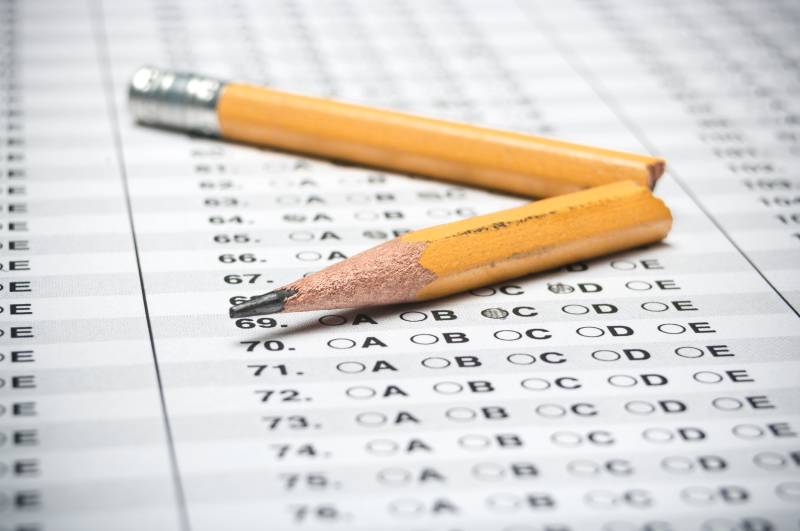Mirroring nationwide trends, there was also a significant statewide decline in scores on the National Assessment of Educational Progress, or NAEP, often called the Nation’s Report Card.
To make some sense of these largely mediocre results, KQED education reporter Julia McEvoy spoke this week with two education experts: Christopher J. Nellum, executive director of The Education Trust–West, an Oakland-based educational equity nonprofit, and Alberto Carvalho, superintendent of the Los Angeles Unified School District. In LA schools, Carvalho notes, eighth graders actually made some gains in reading scores, a relative success he attributes to quickly getting computers in the hands of homebound students early on in the pandemic and offering increased opportunities for summer school and tutoring.
This interview has been edited for length and clarity.
JULIA MCEVOY: What stuck out for you from the results of these two test results, the NAEP and California’s test?
CHRISTOPHER J. NELLUM: We saw relative to other states, given what NAEP shared, that our results are relatively stable, though there are still gaps for our students of color across the state that exist, and in some places they widened. One of our big first takeaways is, sure, it’s good news that our results are stable, but we still are concerned that the gaps existed and maybe are wider than they were before.
While NAEP test scores showed declines, California students’ academic performance fell a bit less than in most other parts of the country. What do you think explains this?
CHRISTOPHER J. NELLUM: Certainly for NAEP, I think what we’re starting to see is at least two things. One is the tremendous investments that were made by the federal government and by the state in K-12 education. Perhaps we’re seeing some of those investments at work. It certainly could have been worse. And I think those investments are starting to work, and we should give them time to continue to have that intended impact.
The other thing that can help us make sense of this, as we’ve heard all over the state from educators themselves and from communities, is that districts and schools were working really hard. So I think we’re seeing some shielding from the impact of the pandemic for at least those two reasons.
What explains LAUSD’s improved test scores relative to other districts across the country, which backslid?
ALBERTO CARVALHO: So I think that in an otherwise very dark landscape of performance across the country, there are two bright spots. And they’re both in the South, just not your traditional south: Southern California and South Florida. LAUSD distinguishes itself in terms of growth at a time when, across the four tested areas — fourth grade reading and math and eighth grade reading [and] math — the only area where LAUSD lost some ground was in fourth grade math. But even there, it lost less ground than other districts and large cities.
In the other areas, we gained anywhere between 2 and 9 points, and that 9-point gain was in eighth grade reading.
And the reasons are simple: This is a district that invested early on in devices for students reaching a one-to-one universal connectivity for all students, better rates of attendance as well as engagement for students, aggressive professional development, a standards-aligned curriculum with progress-monitoring tools, three summers of very aggressive enrollment of those students who would need the greatest assistance, and high-dosage tutoring. You put all those elements together in addition to literacy packets that were sent home with the students, and this is what you get. Not only was there no regression as far as the NAEP is concerned but, in some cases, very strong improvement.
We had an achievement gap before the pandemic and we know many kids living in lower-income and working-class neighborhoods suffered more during the pandemic. What do these test scores tell us about how the pandemic affected the opportunity or achievement gap?
ALBERTO CARVALHO: We actually saw two things with the release of the data. No. 1, American large cities did better than the nation as a whole. That’s counterintuitive. Secondly, in the case of Los Angeles, we saw a very nice progression of performance specific to Black and Brown kids, particularly African American students and students with disabilities. So there’s clear evidence, at a time when the rest of the nation is losing ground in a very aggressive way, that there’s an actual reduction of the gap.
With that said, performance is still low. We moved the needle aggressively, but performance is still low. We need to redouble our efforts, particularly with differentiated approaches with the most fragile students. And those are students of color, students with disabilities and English language learners.
CHRISTOPHER J. NELLUM: The thing that stands out to us is when you look more deeply at the results, while the declines were single-digit in many cases, we still have only 16% of Black students who are at grade level in math and just 1 in 5 Latino or Latinx students at grade level. So pandemic or not, those results are not good enough and we need to do more.

